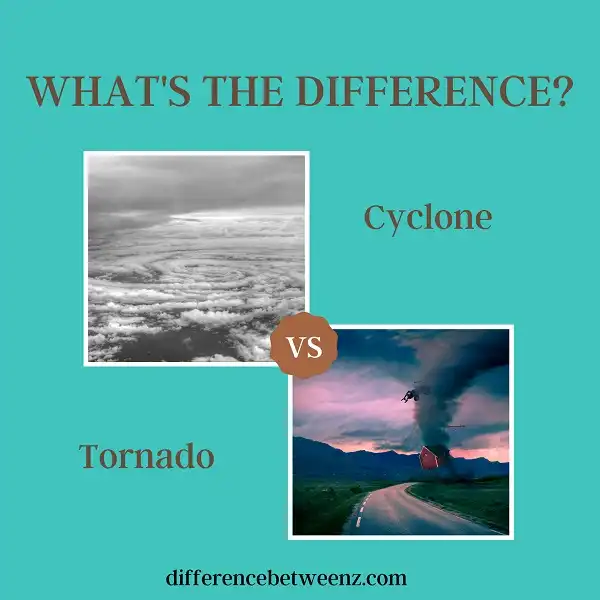You may have heard of cyclones and tornados, but what are the differences between them? In this blog post, we will discuss the key differences between these two types of storms. We will also provide some tips on how to stay safe during a tornado or cyclone. Stay tuned!
What is Cyclone?
A cyclone is a storm system characterized by a low-pressure center and numerous thunderstorms. The term “cyclone” is used to refer to several different types of storms, such as tropical cyclones, subtropical cyclones, and extratropical cyclones. Cyclone Nargis was an exceptionally powerful tropical cyclone that caused devastating damage in Myanmar in 2008. Cyclone India is a region of the world particularly vulnerable to cyclones, as evidenced by Cyclone Vardah which struck India’s east coast in 2016. Cyclone Debbie was a powerful tropical cyclone that caused widespread damage and flooding in Queensland, Australia in 2017. Although cyclones can cause significant damage, they also play an important role in the global climate system by helping to transfer heat and moisture from the tropics to other parts of the world.
What is Tornado?
A tornado is a rotating column of air that extends from the base of a thunderstorm to the ground. Tornadoes can occur anywhere in the world, but they are most common in North America. Tornado season typically runs from May through August, with the majority of tornadoes occurring in the United States. Tornado alley, a region stretching from Nebraska to Texas, is particularly vulnerable to these storms. Tornadoes can have wind speeds of up to 300 miles per hour and can cause significant damage to property and loss of life. While most tornadoes are relatively small and short-lived, some can be exceptionally large and long-lasting. The largest tornado on record occurred in El Reno, Oklahoma in 2013, with a width of 2.6 miles and a path length of over 20 miles. Fortunately, advances in weather forecasting have helped to improve warning times and reduce casualties from these dangerous storms.
Differences between Cyclone and Tornado
- Cyclones and tornados are both weather phenomena that are related to each other. Both of them are rotating columns of air. A cyclone is a large-scale atmospheric system. Cyclone is classified into different scales tropical cyclone, subtropical cyclone, extratropical cyclone, and mesocyclone. A tropical cyclone has a sustained wind speed of over 74 mph while a subtropical cyclone has a sustained wind speed between 33-73 mph. Extratropical cyclone typically doesn’t form over warm water like tropical cyclone but they can happen. A mesocyclone is a much smaller scale system and it is often the precursor for tornado formation.
- A tornado is a violently rotating column of air that extends from the base of a thunderstorm to the ground. The wind speed in the tornado can be over 200 mph. The tornado typically appears as a funnel cloud but it can also appear as a large whale’s tail or simply a rotating cloud of debris. A tornado warning is issued when Doppler radar detects rotation in the atmosphere or when eyewitnesses report seeing a funnel cloud.
Conclusion
Although both cyclones and tornadoes are dangerous weather phenomena, they have a few key distinctions. Cyclone winds rotate around an inner core, while tornado winds rotate around a vertical axis. Additionally, the most destructive part of a tornado is the “vortex” or whirling wind at the center of the storm. A cyclone’s damage is more spread out over its area. Finally, when it comes to predicting these storms, scientists have better luck forecasting where cyclones will hit than tornadoes. Tornadoes are much more erratic in their movements. Knowing these differences can help you stay safe during one of these storms whether you’re in Oklahoma or Australia!


